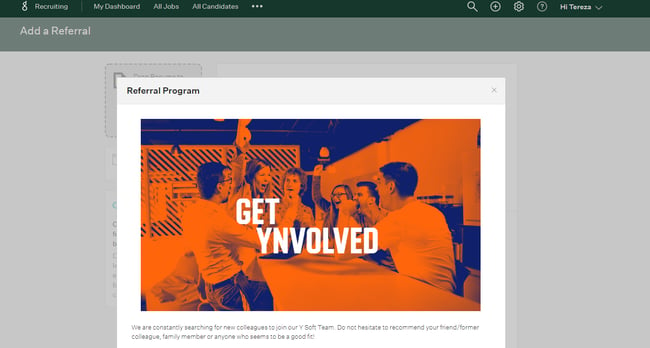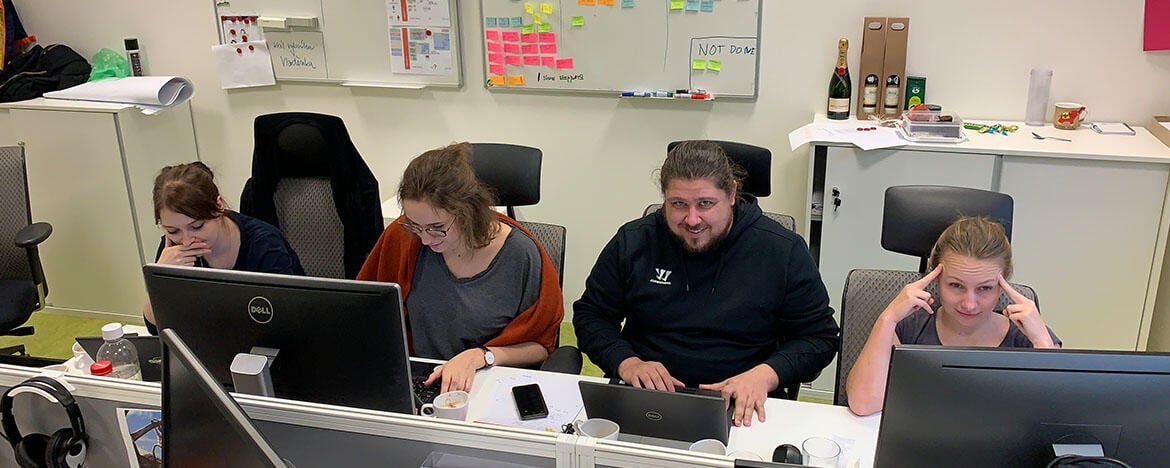Hiring tends to be tricky. We could go on for ages about how crucial it is to find and retain the right people or how the wrong hiring decision and badly managed hiring processes can be costly. We took the liberty of skipping this part and instead are sharing how we chose our applicant tracking system(ATS)and what we learned in the process.
There will be two separate articles: one describing the selection phase and the other focusing on the implementation phase.
WHY AND WHEN WE DECIDED THAT WE NEED AN ATS
Let's be clear—not every company needs to have an ATS. If your company hires 10 people annually and has only a few people involved in hiring, you probably don't need to invest in it. How did we get to the point where ATS was necessary for us? Among others, there are three major traits of Y Soft:
- The company is growing. More than 60 new YSofters were onboarded last year, and this is a future trend.
- We’re in a rapidly developing industry. Therefore, hiring requirements for every role are constantly changing.
- We’re very protective of our culture, and we want to hire new colleagues who share our values. A solid ATS should address all these things—we should be able to do more work quicker, track and adjust requirements in real-time, and keep the culture aspects in the spotlight across all company hiring. Those business traits have been around for quite a while. Also, discussions about new products and company growth were run regularly. Still, our recruitment wasn´t in good shape to keep up this pace.
To be specific, only a year ago, we were still managing the hiring with some basic tools. Our candidate database was Excel. At one point, it got so large that we struggled even to open it. Our hiring overview of open roles was another Excel. Our pipeline, hiring notes, and candidate feedback were emails; our data was manually handpicked from all these.
Our forecasting was more about educated guessing than knowing. As Y Soft’s hunger for high-quality people grew, so did our reporting needs. There was literally no other way out than looking for a solid system and having it in place rather quickly.
BUSINESS CASE - AKA, WE KNEW WHAT WE WANTED, BUT FIRST, WE NEEDED TO CONVINCE SENIOR MANAGEMENT
Initially, we held a few meetings with the Head of HR and representatives of Finance, IT, and Legal to find the right way to choose, approve, and adopt new software in Y Soft. We shared a high-level perspective of what we needed it for and found out what needed to be done to make it happen. We collected their tips, concerns, and first reactions.
The biggest barrier they saw was the price—it was hard for them to see what the benefits and savings would be, mostly because they lacked insight into the recruitment process. For them, it seemed like a fancy tool to do quite basic stuff. The conclusion was clear: We needed to put together a solid cost-oriented business case to show the benefits.
You might be dealing with the same issues—people in your company say that an ATS is expensive. That’s only relatively true, and you will need to show them. Doing hiring badly will cost you more. One or two senior misfires will easily cost you the same as an ATS and cause more trouble on top of that.
Putting the business case together wasn’t easy, but eventually we got there. The critical part was the cost-benefit analysis. In other words, how would we know if an investment in ATS will pay off? When working on this crucial part, we ran into two major problems:
- Since not only the recruitment team will be using the system, we need to consider savings outside of the recruitment team. It was hard to estimate, measure, or even collect enough information (for example, how much time hiring teams will save and how this translates into savings? How much time will employees save by using the referral system?).
- Cold logic says that for systems with a fixed price (you pay what you pay regardless of how many hires you make), the ROI (Return On Investments) is directly dependent on the number of hires you plan to make (more hires, higher ROI)*. This means that the information about how many hires you intend to make in upcoming years is crucial. But, be honest, does your company know? Is your business predictable enough to be able to say that? As for us – it was really hard to say.
These were the key parts of the final equation that turned into positive ROI:
- The yearly fee, one-time implementation fee
Then you have the intangible, hardly monetized benefits that are closely tied to whether your users will be able to use all the opportunities the system offers, such as:
- Detailed candidate requirements help you lead targeted, structured interviews
- Improved feedback loop leading to better and more informed hiring decisions
- Hiring automation leads to a happier recruitment team that can focus on what’s really important
If you try hard enough, you can monetize all the benefits. If you can’t, you’ll need to have around a reliable advocate. We found great support in our Head of HR, who was able to get the buy-in of senior stakeholders and speed up the approval process. Also, the fact that Y Soft is eager for automation was helpful.
SELECTION PROCESS – WHAT WERE OUR REQUIREMENTS AND OPTIONS, HOW WE RAN THE PROCESS
Our initial list included Jobvite, Lever, Greenhouse, Workable, Taleo, SmartRecruiters, Recruitee, Zoho Recruit, Breezy HR, and Recruits. We’re quite sure that we missed some others that might be relevant.
The high-level requirements were quite clear: we wanted a system that would be robust enough to embrace Y Soft’s complex corporate structure and international hiring needs. To put it into perspective—Y Soft has offices in 17 countries; these have variously structured HR support. Therefore, we needed a system that's flexible enough to let us have tailored hiring processes that are flexible to the situation whenever needed but are still robust regarding reporting and keeping a high-level overview of what’s happening within hiring.

As we wanted to be sure that we know our future ATS finalists thoroughly, we invested some time into extensive testing and a full-day hackathon. At this point, we tested literally everything in a sandbox environment provided by the vendor—creating a new job, setting up mail templates, passing candidates through a selection process, interview scheduling... and when we say everything, we mean everything (see List 2 in the Excel file).
It’s important to note that the evaluation matrix we’re sharing is not perfect and focuses mostly on the technology requirements of these systems. That being said, you still might want to look at it if only to get inspired when thinking about a new ATS. We’ve anonymized all our evaluations since we cannot guarantee 100% correctness and don’t want to be unfair to any vendor.
How did we manage the implementation? What were our lessons learned? And how do we now enjoy our daily work in Greenhouse? We will share more about ATS in our second article.



